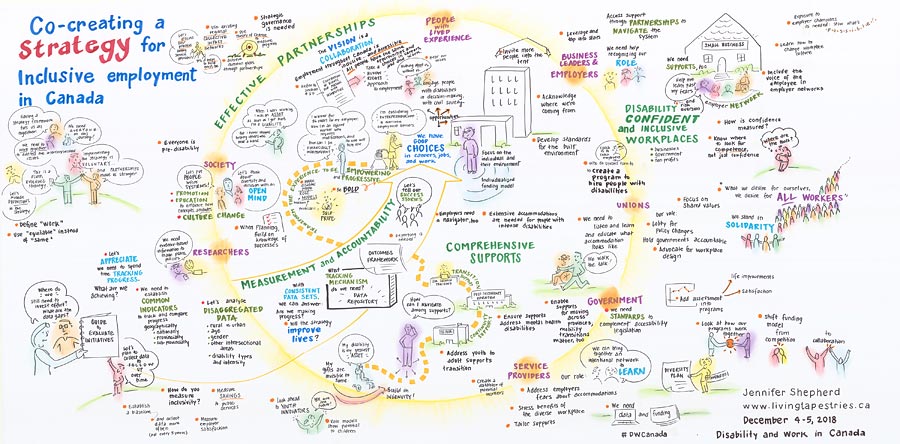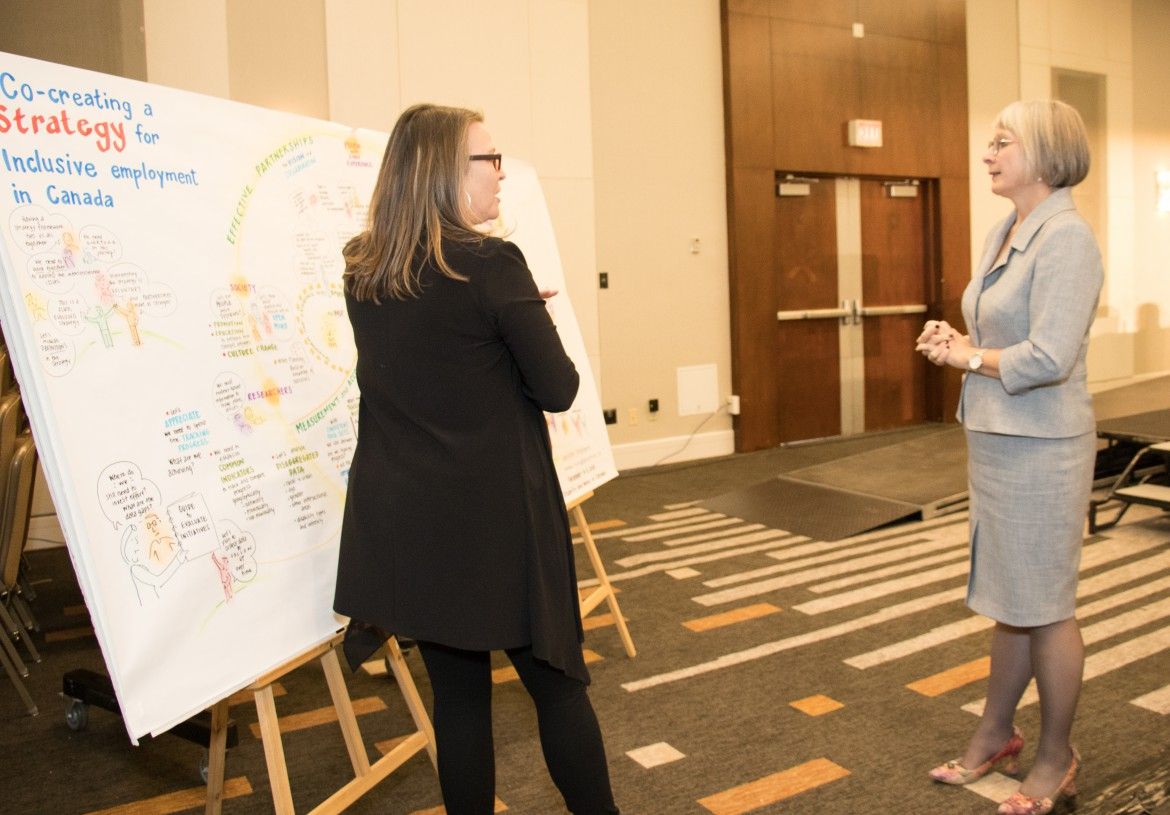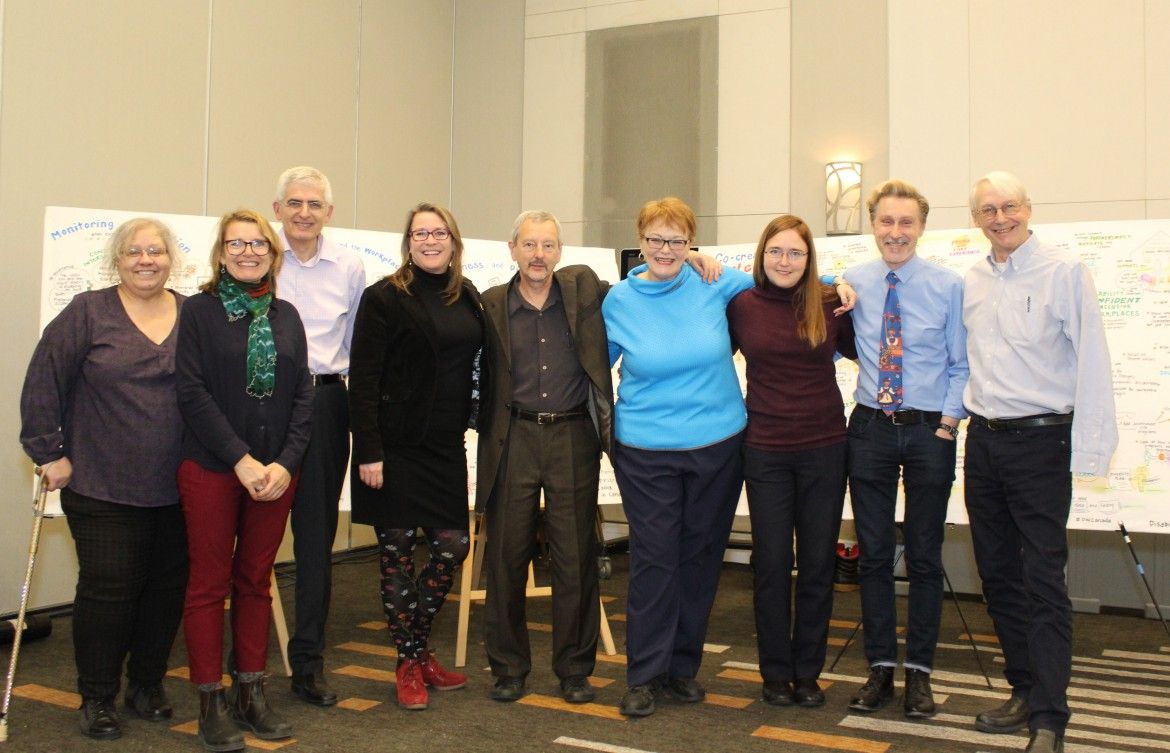Advocates for greater inclusion of people with disabilities in Canadian workplaces are gathering input on, and broad-based support for, a new draft pan-Canadian strategy for building an inclusive workforce.
The draft strategy, unveiled ahead of the Disability and Work in Canada (DWC) conference in Ottawa last December, is designed to promote and guide efforts and initiatives across the country that can be undertaken by various stakeholders to improve employment opportunities for people with disabilities.
The authors of the document—representatives of the Centre for Research on Work Disability Policy (a research initiative housed at the Institute for Work & Health), the Canadian Council on Rehabilitation and Work, the Ontario Network of Injured Workers Groups and InclusionNL—are now gathering feedback on the draft strategy. Their plan is to integrate the input in the final revision of the strategy, which is set to be released in late 2019.

Strategy includes four pillars
The vision set out in the draft strategy, called Moving Forward Together: A Canadian Strategy for Disability and Work, is that of an inclusive labour market, one where people with and without disabilities in Canada have the same opportunities and choices in careers, jobs and work. To achieve that, the draft strategy calls for voluntary initiatives that are focused on the following four key pillars:
- disability-confident and inclusive workplaces—initiatives that address workplace design, accessibility, supports for employers and culture change;
- comprehensive supports—initiatives that are focused on government supports for people with disabilities (including those aimed at education-to-work transitions), and the navigability and alignment of such programs;
- effective partnerships—initiatives that build partnerships among governments, workplace parties, educational institutions, service providers, researchers and people with disabilities; and
- measurement and accountability—initiatives related to establishing baseline measures, setting goals, identifying indicators of progress, developing data sets, and monitoring and reporting by objective third parties.
Getting feedback on this draft strategy was one of the main objectives of the DWC national conference held December 4-5, 2018 in Ottawa, hosted by the same organizations that drafted the document. The event was a follow-up to the DWC conference held in 2017, where the themes and issues addressed in this draft strategy were identified.

Both conferences were attended by a broad cross-section of stakeholders, including people with disabilities, injured workers, activists, support agencies, employers, unions researchers, and policy-makers from the federal and many provincial governments. Also present to deliver her remarks was the Honourable Patty Hajdu, federal minister of employment, workforce development and labour. She spoke of new federal initiatives aimed at greater inclusion, but also of the need for cultural change before true inclusion becomes a reality.
In their feedback, some conference attendees commended organizers for a program that built on the first conference and delved deeper into the issues discussed the year before. Several said they appreciated the opportunity to collaborate and connect with stakeholders outside their usual networks. One person noted that the diverse backgrounds, viewpoints and experiences of the stakeholder organizations and their representatives at the conference enriched the conversations about labour-market accessibility, providing context, history and first-hand experiences from multiple perspectives.

The task ahead for attendees is to take the draft strategy back to their home communities and invite as many individuals and organizations as possible to reflect and remark on it, says Alec Farquhar, chair of engagement on the conference steering committee. The engagement to date has been tremendous,
he says. We’ve reached a number of key activists and organizations in the disability community, but we know there are many important stakeholders and potential partners we still need to hear from.
The consultation process will include a survey, face-to-face meetings and webinars. Stakeholder groups to be consulted include people with disabilities, injured workers, community agencies, Canadian businesses, provincial and federal governments and researchers. The consultation process takes place March and April, but input received after May 3 will still be considered, since the steering committee will be revising the draft strategy for release later in the year. A policy roundtable is set to take place in the late spring or early summer of 2019 to solicit input from government policy-makers.
The draft strategy is available on the CRWDP’s website. To provide feedback, email: Feedback@DWCstrategy.ca.